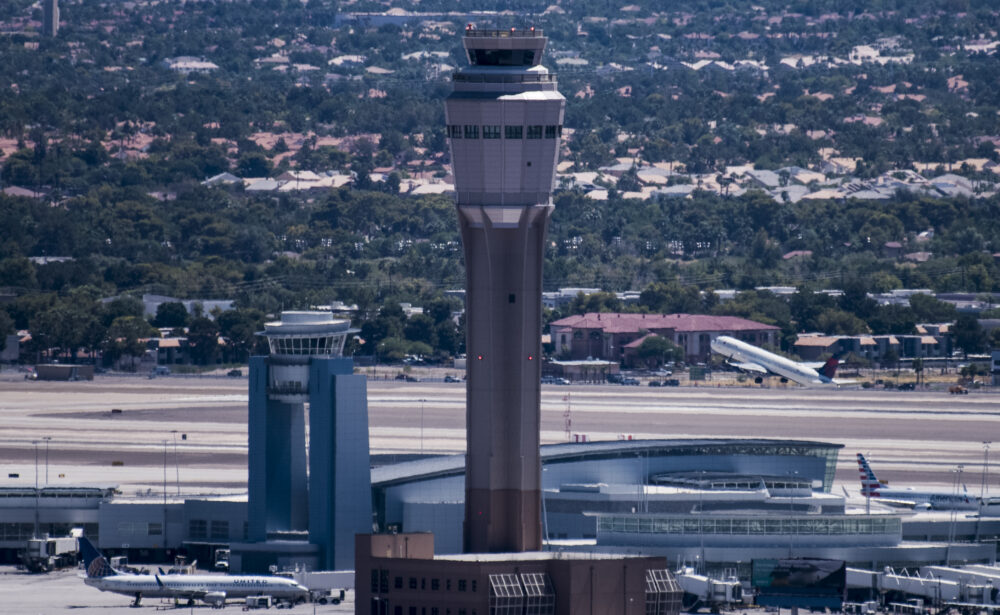Air Traffic Controllers are a critical part of commercial flight operations and safety. They can usually be found in a high tower near the airport, giving them a clear view of everything happening on the ground and in the skies above. But what exactly do Air Traffic Controllers do? Let’s find out.

Keeping an eye out
Air Traffic Controllers (ATCs) are popularly known as the group who sit in a high tower over the airport, wearing headsets, and keeping an eye out over the airfield. This is an abbreviated definition of the job.
Indeed, any air traffic controller’s primary job is to monitor aircraft in its airspace and maintain constant communications with crew and ground staff. There are three types of main air traffic controllers, namely:
- Tower Controllers
- Approach and Departure Controllers
- En Route Controllers

Tower Controllers are responsible for the movement of planes, vehicles, and staff on runways and taxiways. They also receive and clear flight plans in advance, ensuring there is no overlap with the dozens of other flights on the same day. Moreover, they also communicate weather changes, runway closures, and more.
Once a plane is ready for departure, tower controllers will provide instructions and ensure no other planes or vehicles are obstructing the taxiways or exits. They also provide takeoff clearance, allowing a plane to safely depart without any complication. Overall, tower controllers manage traffic three miles to 30 miles in and around the airport.
However, it’s not only planes that controllers have to handle. Vehicles such as safety cars, maintenance, and others must allow request permission before entering any active runway or taxiway.
In the sky
Once a plane has safely taxied and taken off, approach and departure controllers take over communications. They are responsible for ensuring all planes maintain minimum separation while flying, that their flight path is clear of obstacles (including other aircraft), and handing off to en route controllers.
These are the controllers who can be seen behind radar screens, monitoring dozens of planes that might be in their airspace. In the US, these controllers work out of buildings known as Terminal Radar Approach Control Centers (TRACONs).
There are hundreds of TRACONs in total (147 to more precise), monitoring 50 kilometers of airspace each as designated by the FAA. Many of these are merged with existing airport ATCs, but some might be individual towers as well.

Any changes in altitude, speed, or direction must be cleared by controllers before being undertaken by pilots. The term ‘roger’ is commonly used while confirming instructions over radio communications with controllers. Approach and departure controllers monitor planes up to 17,000 feet in altitude and about 20 to 50 miles from the airport.
As the name suggests, similar steps are repeated while the plane begins its approach into an airport. These controllers will once again check for separation, traffic, and flight plans before allowing the plane to land and handing back over to traffic controllers.
Cruising
Everything feels a bit more relaxed once the aircraft reaches cruising altitude. Passengers can recline their seats, cabin crew begin preparing for service, and planes are on autopilot. However, there are still air traffic controllers monitoring the plane, known as En Route controllers.
These controllers monitor planes as they fly over multiple states and follow their flight plans to their destination. In the US, they work out of Air Route Traffic Control Centers (ARTCCs), and the country is divided into 21 zones. Additionally, there are four combined control facilities (CCF) for oceanic and military traffic.

These ARTCCs monitor thousands of planes every day as they cross boundaries to reach their destinations. A transcontinental flight can easily pass through several ARTCCs on its way. Their primary job is to guide planes along their flight path, prevent any loss of separation and collisions, and general safety of the airspace. Planes spend most of their time in contact ARTCCs as they travel hundreds or thousands of miles every flight.
There are also nation-level airspace controllers who monitor traffic for any large-scale bottlenecks. There is only one in the US, the Air Traffic Control Systems Command Center (ATCSCC), and they don’t communicate directly with pilots. Instead, this facility focuses on communicating with other ATC towers to ensure a smooth flow of traffic or warn of security concerns.
Important job
Air Traffic Controllers play a crucial role in aviation and work to prevent any kind of safety incidents. From ensuring two wingtips don’t graze on the ground to preventing any mid-air collisions, controllers have a heavy responsibility from their perch in the sky. Considering airports can see hundreds or thousands of flights daily, vigilance is crucial.
For this reason, air traffic controllers have strict entry requirements. In the US, you can only become a controller before your 31st birthday and have to retire by 56. This is to ensure sharp mental acuity, situational awareness, and short-term memory. Moreover, any serious health conditions like heart disease, diabetes, or mental illness can be disqualifying.

Overall, the air traffic controllers must be quick to respond to a crisis and are held to similar health standards as pilots. This is because even the smallest of delays or hesitation can result in a disaster during a crisis. This means being an air traffic controller can be a stressful job at times, especially when traffic is high. However, it is undoubtedly rewarding and a critical job for air travel to continue smoothly every day.
Did you know what air traffic controllers did before this piece? What do you think about the job? Let us know in the comments!
from Simple Flying https://ift.tt/3gR2XQL
via IFTTT
Comments
Post a Comment